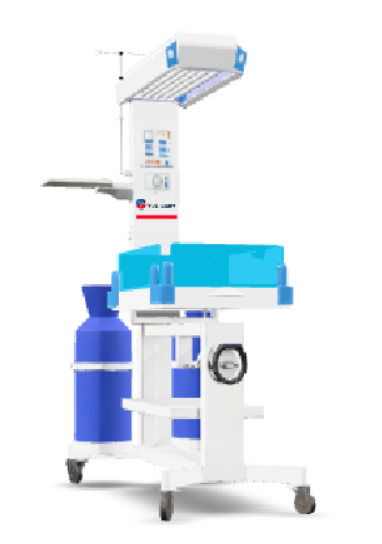Description
The Infant Radiant Warmer YG1819 is a groundbreaking neonatal care device designed to ensure precise thermal regulation and comprehensive resuscitation for newborns. Equipped with a dual-control microcomputer system, this warmer offers unmatched accuracy with ±0.3°C temperature precision in both skin temperature and manual modes. Its integrated oxygen delivery system and optional bilateral phototherapy make it an indispensable tool for neonatal intensive care units (NICUs) and delivery rooms. This power-efficient unit rapidly heats from 25°C to 37°C in under 30 minutes, catering to the demands of high-pressure clinical environments.
Market Price
The Infant Radiant Warmer YG1819 is competitively priced within the upper-midrange segment of neonatal equipment. Typically, similar models in the market reflect a price range between $3,100 and $3,900, offering significant value considering the advanced features and comprehensive neonatal support it provides. This investment in neonatal safety ensures long-term benefits for healthcare facilities prioritizing high-quality newborn care.
Frequently Asked Questions
- What distinguishes the YG1819 model from the YG1820? The YG1819 model includes a built-in oxygen delivery system and offers bilateral phototherapy options, providing enhanced capabilities for comprehensive neonatal resuscitation.
- What is the oxygen concentration delivered by the system? The integrated flow meter allows for medical oxygen delivery ranging from 0.5 to 10L/min at a 100% concentration.
- Can the intensity of the phototherapy be adjusted? Yes, the optional modules for fluorescent or LED phototherapy provide irradiance ranging from 8-30 μW/cm²/nm with adjustable controls.
Advantages and Disadvantages
Advantages
- Resuscitation-Ready – The built-in oxygen and suction systems eliminate the need for separate resuscitation equipment.
- Precision Thermal Control – Achieving ±0.3°C accuracy, it meets international clinical standards for neonatal care.
- Future-Proof Design – The device can be upgraded to LED phototherapy as needed, facilitating long-term usage.
Disadvantages
- Larger Footprint – Requires approximately 2m² of space for optimal functionality, which might be versatile in smaller settings.
- Oxygen Monitoring – Additional pulse oximeters are needed for SpO₂ tracking, potentially increasing setup complexity.
- Energy Use – With a peak power draw of 770VA, a stable power supply is necessary to ensure consistent operation.
Product Use in the Field
The YG1819 Radiant Warmer is a vital component in labor and delivery rooms, facilitating the smooth transition of newborns. It is particularly effective in emergency C-sections where immediate stabilization is critical. Community hospitals and neonatal transportation units also benefit from its comprehensive functionality, especially in scenarios where swift resuscitation and supplemental oxygen are necessary. Its built-in systems offer invaluable support in remote clinics, ensuring that critical care is always within reach.
Recommendations
To ensure optimal performance and longevity of the YG1819, it is recommended to calibrate the oxygen flow meter every six months and conduct daily alarm tests prior to use. It’s vital to rotate oxygen bottles regularly to maintain sufficient emergency supplies. For hygiene, cleaning surfaces with quat-based disinfectants is advised, and ensuring that staff are well-trained in operating the combined warmer and oxygen systems is crucial.
Features
- Dual-control microcomputer system for precise temperature regulation
- Integrated oxygen delivery with flow meter
- Optional bilateral phototherapy for jaundice treatment
- Rapid heating capability for neonatal care
- Adjustable radiant canopy for improved accessibility
- RS-232 connectivity for seamless EMR integration
Technical Specifications
| Model | YG1819 |
| Electrical requirement | ~ 220V 50Hz or ~ 230V 60Hz |
| Power consumption | ≤770VA |
| Air mode temperature range | 25.0°C~37.0°C |
| Over temperature alarm | <38.0°C |
| High mode temperature range | 37.1°C ~ 38.0°C |
| High mode temperature alarm | <39.0°C |
| Temperature deviation alarm | ±1.0°C |
| Skin sensor accuracy | ≤±0.3°C |
| Mattress temperature Uniformity | ≤2.0°C |
| Heating rate | ≤30min |
| APGAR timing | 1 min. 5min. 10min |




